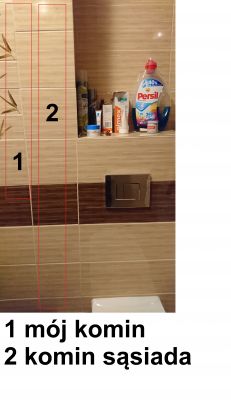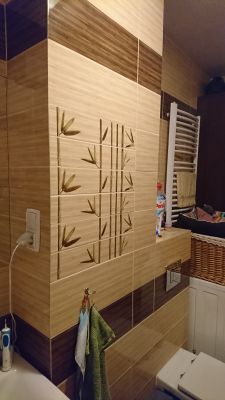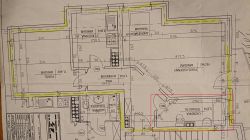Hello.
I live in a block of flats. For some time now, air has been blowing from the toilet in the bathroom - specifically, from the hole through which water from the tank flows into the toilet bowl. From my observations, I concluded that the effect is felt when the kitchen hood is turned on by a neighbor living below. Initially, there was supposed to be a shop next to me, but the plans changed and there is a private apartment there. Their kitchen is directly below my bathroom. We have separate ventilation shafts. Air is also released evenly from the water flush button (I marked the ventilation shafts in the photo). I have been "fighting" the problem since April 2018 with rather poor results, the cooperative will do its best (but does nothing), the guy downstairs won`t let anyone into the apartment. The problem also occurred with the neighbor above me with the same symptoms. The entire bathroom smells of cooked food and burning pets. How is it possible for odors to escape through these holes? I don`t know where to look for help anymore. Who to approach with the topic? Will a building inspector do anything?
Regards

I live in a block of flats. For some time now, air has been blowing from the toilet in the bathroom - specifically, from the hole through which water from the tank flows into the toilet bowl. From my observations, I concluded that the effect is felt when the kitchen hood is turned on by a neighbor living below. Initially, there was supposed to be a shop next to me, but the plans changed and there is a private apartment there. Their kitchen is directly below my bathroom. We have separate ventilation shafts. Air is also released evenly from the water flush button (I marked the ventilation shafts in the photo). I have been "fighting" the problem since April 2018 with rather poor results, the cooperative will do its best (but does nothing), the guy downstairs won`t let anyone into the apartment. The problem also occurred with the neighbor above me with the same symptoms. The entire bathroom smells of cooked food and burning pets. How is it possible for odors to escape through these holes? I don`t know where to look for help anymore. Who to approach with the topic? Will a building inspector do anything?
Regards





